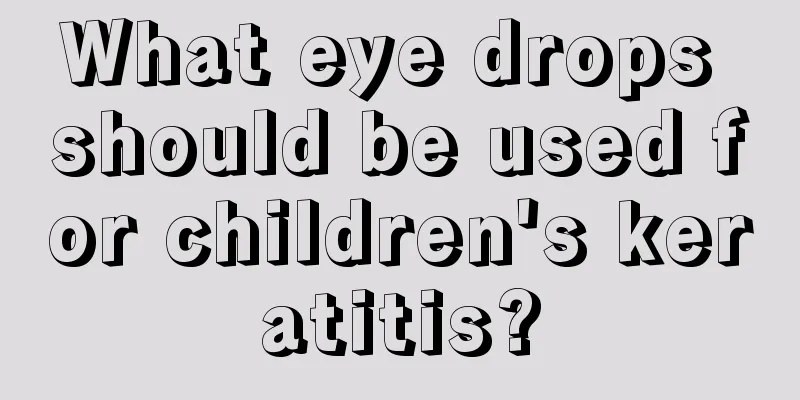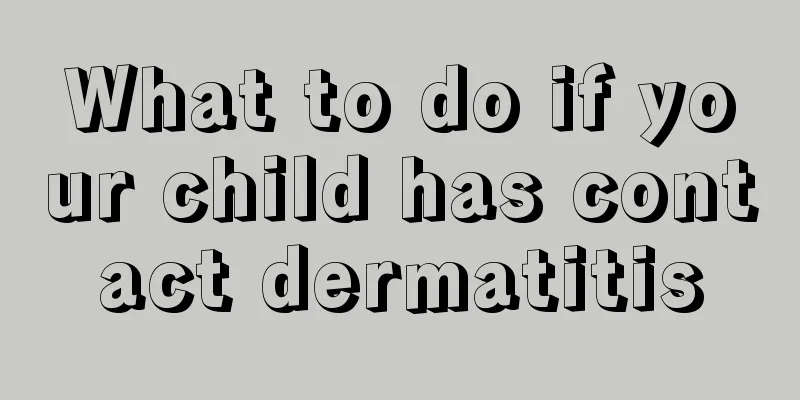What eye drops should be used for children's keratitis?

|
The cornea is a part of the eye and its importance is self-evident. Let’s put it this way, if humans don’t have the help of the cornea, no matter how good their eyeballs are, they will not be able to see anything in the outside world. The so-called keratitis in clinical practice is easy to understand. It is a disease in which the cornea is inflamed due to various reasons. Not only adults are prone to it, but children as well. What eye drops should be used for children with keratitis? It is recommended to use compound taurine eye drops (Little Rohto), which is mainly used for children under 15 years old to relieve visual fatigue and chronic conjunctivitis or those with conjunctival congestion. Place drops into eyelids, 4 to 6 times a day, 1 to 2 drops each time. Aminoethanesulfonic acid, also known as taurine, is a sulfoamino acid. Taurine is an antioxidant that protects cells and tissues from oxidative damage. Chlorpheniramine maleate has antihistamine effects. Aminocaproic acid inhibits fibrinolysis. The test results show that Rohto can relieve conjunctival congestion caused by chemical inflammatory substances and physical factors, and has an anti-histamine effect. treat The basic principle of treating keratitis is to take all effective measures to quickly control the infection, strive for early cure, and minimize the sequelae of keratitis. Since most ulcerative keratitis is caused by external factors, it is extremely important to eliminate the external factors and pathogenic microorganisms. In addition to eye treatment, corneal lesions related to systemic diseases should also be actively treated for the underlying disease. Pay attention to observation during the treatment. If conjunctival congestion is reduced and corneal lesions are reduced and flattened, it means that the treatment is effective. If conjunctival congestion worsens, corneal lesions extend deeply and peripherally, anterior chamber abscess is obvious, surface condition worsens, and treatment is ineffective, the treatment plan should be adjusted in time. Corneal transplantation is performed if conservative treatment is ineffective or scarring left by ulcers significantly affects vision. 1. Hot compress It dilates the blood vessels in the eyes, relieves congestion, promotes blood flow, enhances resistance and nutrition, and allows ulcers to recover quickly. 2. Rinse If there is a lot of secretion, the conjunctival sac can be flushed 3 times or more a day with normal saline or 3% boric acid solution to flush out the secretion, necrotic tissue, bacteria and toxins produced by bacteria. In this way, not only the factors that spread the infection are reduced, but also the concentration of the local medicine is ensured not to decrease. 3. Mydriasis Dilating the pupil can reduce iris irritation, prevent posterior synechiae, and put the eye in a resting state, which is beneficial to the healing of ulcers. Atropine is a commonly used drug with a concentration of 0.25% to 2% solution or ointment, which is dripped or applied daily (be sure to press the lacrimal sac after dripping the drug to prevent the solution from being excessively absorbed by the mucous membrane and causing poisoning). 4. Medication (1) Antimicrobial therapy Select effective drugs for local eye drop treatment against pathogenic microorganisms. For severe corneal ulcers, antibiotics can be injected under the conjunctiva. For ulcers that are more serious but the results of bacterial culture and drug sensitivity tests are not yet known, multiple broad-spectrum antibiotics can be tried simultaneously at the beginning. (2) The use of glucocorticoids should strictly follow the indications and can be used to treat allergic keratitis and stromal keratitis. Corticosteroids are contraindicated in the acute phase of bacterial keratitis and fungal keratitis. (3) Oral medications can be added to severe keratitis to increase local nutrition and promote ulcer healing. Commonly used vitamin C, vitamin B2 and cod liver oil pills. |
<<: Why is surgery necessary for Kawasaki disease coronary artery aneurysm?
>>: What should you pay attention to when choosing eye drops suitable for children?
Recommend
What to do if your child has too much body hair
It is common for adults to have excessive body ha...
What vaccines should babies get when they are one and a half years old?
Children should be vaccinated when they are one a...
What should I do if my child has lymph node disease?
There are many different lymphatic tissues distri...
How can children grow taller?
After comparing their children with other childre...
9 month old baby has a cold
In fact, the immune system of a 9-month-old baby ...
When do girls develop puberty?
Everything in today's families revolves aroun...
Developmental standards for 11-year-old children
We all know that when a child reaches the age of ...
Why does my child’s skin suddenly turn dark?
Children's skin is relatively tender, and the...
What should I do if I feel scared when sleeping at night?
Many children are afraid of sleeping alone at nig...
What should I do if my baby has a bloated stomach and diarrhea at eight months old?
If your baby has abdominal distension and diarrhe...
The earliest symptoms of neonatal hypothyroidism
The birth of a new life, no matter where it is, i...
Epilepsy symptoms in children
Epilepsy is a relatively common disease, also kno...
The child coughs in the middle of the night
Children have weaker immunity and often get sick ...
Why is it that the full-month baby has difficulty breathing?
Some parents will find that one-month-old babies ...
Why does the baby vomit when switching from breast milk to formula?
Mother’s breast milk is very important to the bab...









